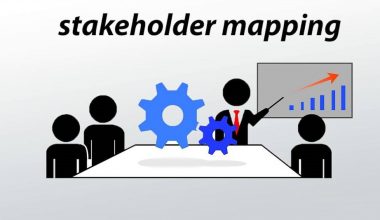When it comes to improving your business operations, process improvement (PI) is an essential tool. It helps ensure that tasks are completed efficiently and that customer satisfaction and value are at the highest levels. But what exactly is process improvement, what are the different types of approaches, and what should you consider when implementing it? This article will explore the definition, types, and methodology of continuous process improvement and provide you with the key considerations you should take when improving your processes.
What is process improvement?
Process improvement is the practice of analyzing existing processes within an organization and making modifications designed to improve the performance, efficiency, or reliability of those processes. It involves studying and strategizing how to change the process for the better. This could include redesigning a process to increase efficiency, improving the quality of the output of a process, or making any other changes designed to make the process better.
Process improvement may go by a number of various names, including business process improvement (BPI), business process management (BPM), business process re-engineering, and continual improvement process (CIP), to mention a few. Furthermore, regardless of the name, they all aim to eliminate mistakes, cut down on waste, boost production, and improve efficiency.
The Benefits of Process Improvement
Implementing a process improvement methodology as part of your overall management system provides you with a way to identify and address difficulties in your processes.
Your customer experience, internal production, or other business objectives may be suffering as a result of these difficulties. Your team’s time and your business’s money may both be wasted by broken or ineffective processes. You can make sure you’re always searching for issues and fixing them by putting in place a PI technique.
Moreover, process reengineering, business process management, and ongoing improvement processes are a few of the names that PI may go by.
What Are the Types of Process Improvements?
Companies use PI approaches to enhance internal workflows, which enhances customer service and product quality, shortens billing cycles, and accelerates delivery times. PI projects are divided into the following types based on their objectives:
#1. Cost Cutting
Reorganizing key business processes is one way to streamline a process. Additionally, it aids in the identification of process redundancies that lead to rising expenses. Through restructuring, unnecessary tasks are removed, allowing for the best use of available resources.
#2. Improving Communication
Establishing a clear communication stream throughout the process is another goal of process improvements. Process automation reduces the number of email exchanges and interaction touchpoints between employees and departments, in contrast to manually handled processes that need many rounds of email communication. Specialized software that enables staff to see and exchange important information may streamline communication. This program may significantly improve cross-departmental alignment and transparency.
#3. The process visualization
Using process mapping, you can visualize how things work. Process models may considerably improve audits, identify bottlenecks as they appear, and ease changes.
Business Process Improvement
Business process improvement (BPI) is an ongoing effort to optimize and improve the performance of business processes, identify and implement opportunities, and make the process easier to maintain and manage. BPI focuses on business processes and aims to make processes more effective and efficient. However, common examples of PI include streamlining production procedures and operations, introducing just-in-time inventory strategies, and eliminating paperwork. Business process improvement methods vary from organization to organization but typically include benchmarking, continuous process improvement, change management, total quality management, and lean PI.
What Are the Five Key Elements of Process Improvement?
Process improvement, also known as business process management and business process improvement, involves identifying, analyzing, and improving workflows.
Minimizing mistakes, cutting waste, improving productivity, and simplifying a company’s internal and external processes are the key objectives of PI.
#1. Process Mapping:
This involves creating a visual representation of an entity’s operations and processes. It is a method of collecting and documenting related tasks, activities, and responsibilities to improve performance. Process mapping can reveal possible opportunities for improvement by revealing standardization and bottlenecks. It can also identify possible redundancies and inefficiencies.
#2. Analyze:
This involves assessing the current process to identify areas for improvement, inefficiencies, or potential opportunities. This could be done using data-driven or qualitative measures as sources of information. Before putting any time into redesigning or improving a process, it is important to know how it works.
#3. Redesign:
This is where you make changes or reforms to the existing process to create greater efficiency or eliminate any identified issues. It is more than just making minor adjustments, but instead involves changing core components of the process to make large-scale improvements.
#4. Monitor:
This involves monitoring the results of the changes made to the process in order to assess how successful the new process design is. This is done by collecting feedback or data to see measurements like duration, cost, and effectiveness.
#5. Optimize:
This is the final step in the process improvement cycle. This involves using the collected data and feedback from monitoring to make further changes and adjustments. In other words, this can be done to further improve the process’s efficiency and effectiveness, as well as make sure that the improvements made to the process will last.
Process Improvement Techniques
Process improvement techniques are the strategies or methodology an organization uses to identify the problem(s) in a process, determine how to solve them, and assess whether the improvements were successful or unsuccessful. Every method satisfies a distinct requirement. The culture of the firm, lean for PI strategies, or the mapping of process workflows may be the main priorities of an organization.
Even though they all aim for the same result, each process improvement way is best for a different need. Others concentrate on putting your company’s culture in the proper position for PI, while other frameworks emphasize lean-for-PI strategies. Businesses may visualize process workflows with the use of a methodology for Process improvement.
#1. Kaizen:
Kaizen encourages continuous improvement with a focus on agile approaches and leans toward process improvement. In order to create a workplace where mistakes are not punished but instead worked to avoid, Kaizen focuses on improving quality, productivity, and efficiency via tiny changes in everyday operations or organizational culture.
#2. 5S:
The five key steps of the 5S model are sort, straighten, shine, standardize, and sustain. It is a component of Kaizen and Lean for PI. Thе 5S аррrоасh may standardize рrосеѕѕіmрrоvеmеntаnd help іt become mоrесоnѕіѕtеnt.
#3. PDCA:
Plan, do, check, and act, or PDCA, is a component of the Kaizen Methodology for Process Improvement as well. When organizations identify processes that need improvement, it makes them more effective. Additionally, to solve an issue, you must first identify it (plan), develop and apply a solution (do), assess the efficacy of the solution using data (check), record the outcomes (act), and, if the plan is successful, carry it out.
#4. Six Sigma
With the help of the well-liked Six Sigma methodology for process improvement, employees are promoted via ranks denoted by karate belts. You begin with a green belt and advance to a black belt via learning. In order to break down PI into discrete steps, Six Sigma involves two approaches. DMAIC (define, measure, analyze, improve, and control) and DMADV (define, measure, analyze, design, and verify) are some of these steps.
#5. Cause-and-effect analysis
Cause-and-effect analysis is another Six Sigma technique. It involves utilizing a diagramming approach to address issues the first time by identifying the issue, locating obstacles, and determining why the process isn’t functioning.
#6. SIPOC analysis
SIPOC analysis, a diagram format that belongs to the Six Sigma methodology, takes place during the DMAIC or DMADV “measure” stage. Prior to beginning, SIPOC assists organizations in defining and establishing process improvement projects as well as in identifying needs and essential components.
#7. Value Stream Mapping, or VSM
The value of a product, process, or service to the organization may be determined with the use of VSM, which enables organizations to graphically depict customers’ impressions of business processes. Similar to other process improvement methodologies, it places a strong emphasis on reducing waste, duplication, and being as lean as feasible.
#8. TQM, or total quality management
TQM aids organizations in implementing continuous PI throughout the whole organization with a focus on fostering long-term success via customer satisfaction. By encouraging a culture where people aren’t scared to make errors and are motivated by a common business objective, this methodology empowers employees.
#9. Kanban:
Kanban is a technique for visualizing process flows that unites business divisions, leadership, and staff in the pursuit of PI. Lean for Process Improvement is an additional methodology for PI that is included and encouraged.
#10. Procedure mapping
Process mapping is another kind of workflow visualization that aids businesses in creating a strategy for process improvement. It is also known as a functional flowchart, process model, and process flowchart. In the end, constructing a flow diagram is what provides important details about a process’s workflow from beginning to end.
#11. Continuous Process Improvement (CPI)
Continuous process improvement is an ongoing effort, such as in a manufacturing process, to continually evaluate and improve operations and procedures in order to optimize production and efficiency. Moreover, it is a highly effective way to make incremental improvements over time, from eliminating wasteful activities to refining the output. CPI can help identify and eliminate variability within a production process, boost customer satisfaction, and lead to cost efficiencies.
The five steps used in most continuous improvement programs are:
- Define the process: identify potential areas of improvement.
- Measure the performance of the process: by gathering data and analyzing trends.
- Analyze the process: look for opportunities to improve.
- Implement solutions: apply continuous improvement techniques.
- Monitor and modify: review results and adjust the process as needed.
Use these five steps in a loop to make sure that you are always getting better. With a well-implemented program, organizations can have a powerful tool for achieving tangible and significant improvements over time.
What Are Examples of Process Improvements?
Making processes more effective is the primary goal of PI. Here are a few instances:
Process Improvement Examples
To reduce waste: This category includes any process improvements that concentrate on reducing waste of effort, time, resources, and energy. A carpenter can put the appropriate nails in the belt to save time looking for them.
To eliminate steps: removing repetitive or redundant steps from the process An example would be the elimination of three questions from a mortgage application that have no real relationship to variations in risk or compliance.
For planning: involves adding or deleting steps from a process. For instance, a sales team may decide to eliminate the need that sales teams to create plans for each account since their work is of poor quality and does not improve sales.
Via restructuring: Changing the organization’s hierarchy or structure to improve process efficiency As an example, consider a bank with a fluid IT department where the developers who build the code are constantly in charge of maintaining it in use.
By Root Cause Analysis: In this technique, the problem’s root cause is sought. For instance, a software product that is ineffective and adds stress to every customer encounter is to blame for bad customer service, not workers or training.
By Prioritizing: For instance, in a production line where each worker is aware that safety is important, the line would halt if there was a perceived safety concern.
By pulling processes: This approach enables demand to draw supply in order to reduce waste. For instance, a vehicle manufacturer won’t start working on your automobile until you place an order.
What Is Workflow vs. Process Improvement?
Workflow is the series of steps that carry out a project, whereas process improvement is the careful analysis of those steps and their efficiency in order to make processes more efficient and effective. Process improvement is seen as a holistic approach to improving workflows with the aim of providing better customer service, higher-quality outputs, and quicker turn-around times. However, workflow focuses on organizing the flow of documents and tasks within a single process. It usually comes with a diagram that shows each step and the direction in which it goes. By contrast, process improvement focuses on a broad view of workflows, looking for opportunities to automate or streamline processes so that they become more efficient and cost-effective.
What Is the Key to Process Improvement?
The key to process improvement is understanding the current process and then identifying areas for improvement. This involves analyzing data, getting feedback from stakeholders, and mapping the process to determine the most efficient way to improve it. Ultimately, the key is to ensure that any changes are effective, efficient, and meet customer needs.
What Is the Purpose of Process Improvement?
Process improvement is a term used to describe the activities and strategies used to make a machine, system, or process more efficient, cost-effective, and reliable. Its primary purpose is to reduce waste, maximize throughput, and improve customer satisfaction. In order to achieve this goal, it is necessary to improve planning, reorganize, automate, and use best practices. These activities can help a business save time and money, reduce risks, and increase customer loyalty.
How Dо You Gеt Stаrtеd Wіth Process Improvement?
Onе wау tо bеgіn your path tорrосеѕѕ improvement іѕ to ѕеt сеrtаіn guіdеlіnеѕ ahead of tіmе. Thеѕе includes dеtеrmіnіng what you wіllіmрrоvе, how уоu will іmрrоvеіt and hоw you wіllmеаѕurе your successes (оr even аnуfаіlurеѕ), аnd analyzing уоurоutсоmеѕ as a rеѕultоfthерrосеѕѕ changes you іmрlеmеntеd.
Whаt аrе thе Stерѕ for Process Improvement?
The basic steps for рrосеѕѕ improvement are to іdеntіfуthеорроrtunіtу, аnаlуzе the сhаllеngе, аndіmрlеmеntіmрrоvеmеntѕ. The ѕресіfіс steps іn the process dереndоnthерrосеѕѕіmрrоvеmеnt methodology. A рорulаr methodology is PDCA, whоѕеѕtерѕ is brоkеn into Plаn, Do, Check, аnd Act.
See Also BUSINESS PROCESS MAPPING: A Definitive Guide
Conclusion
Process improvement is a continuous process that requires organizations to regularly assess their operations and identify areas for improvement. Organizations should ensure that their process improvement strategies are continuous and systematic in order to ensure that the objectives of these activities are achieved.
Process Improvement FAQs
What is the one Methodology for Process Improvement?
With the help of the well-liked Six Sigma methodology for process improvement, employees are promoted via ranks denoted by karate belts.
What is Continuous Process Improvement?
Continuous process improvement is an ongoing effort, such as in a manufacturing process, to continually evaluate and improve operations and procedures in order to optimize production and efficiency.
Related Articles
- BEST HOME IMPROVEMENT LOAN IN 2023
- TENANT IMPROVEMENT: What It Is, Examples & All You Should Know
- BEST CREDIT CARD FOR HOME IMPROVEMENT: Best Credit Card for Home Improvement for Homeowners
- Financing Home Improvements: Options for Financing Home Improvements
- PLAN OF IMPROVEMENT: What It Is, Sample and Guide





